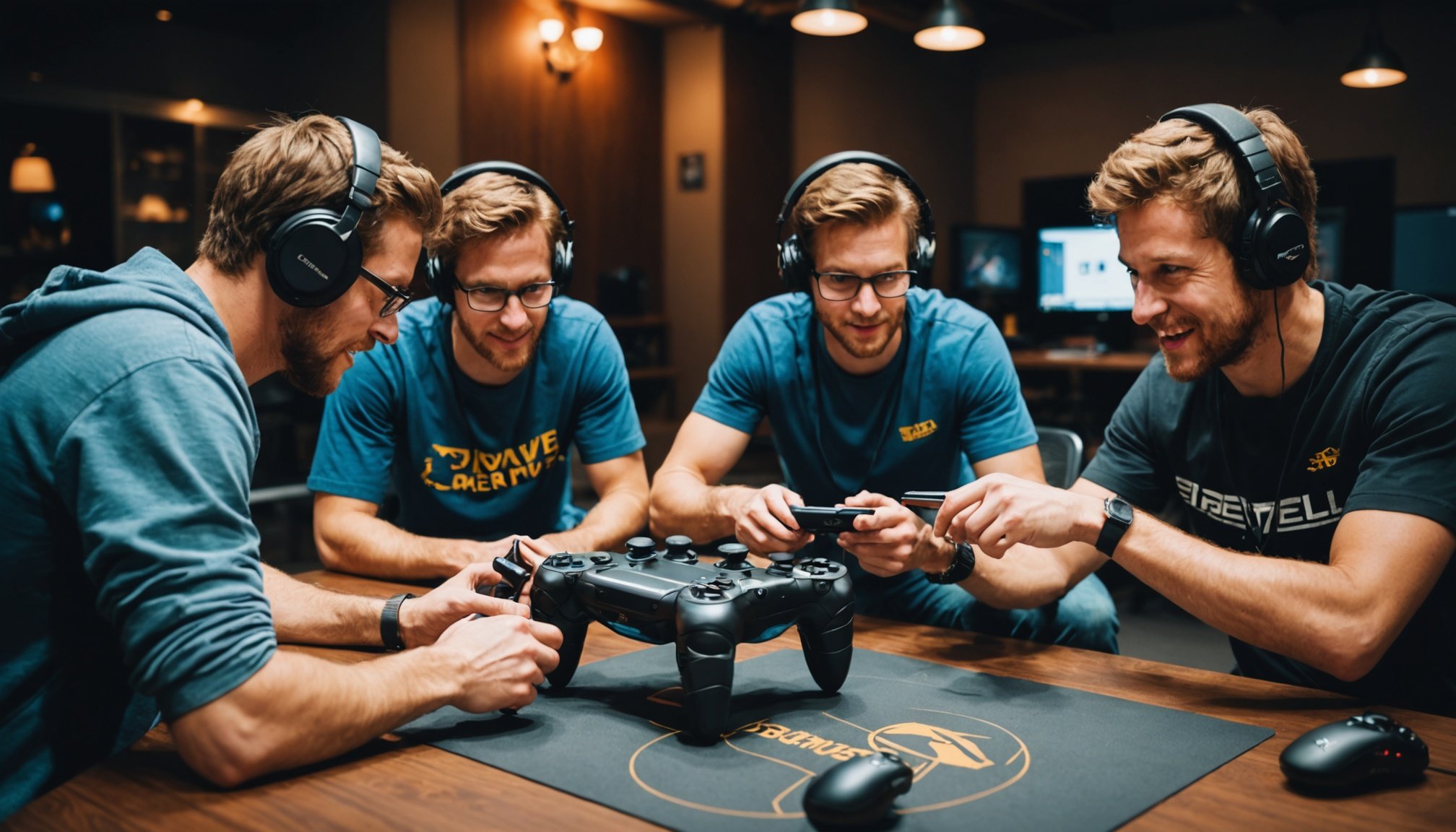Effective Communication Techniques
In multiplayer games, communication strategies are pivotal for success. Clear, concise communication enhances team dynamics immensely. When players articulate strategies succinctly, the team can react promptly, minimizing chaos during critical gameplay moments. Utilizing voice chat and in-game messaging systems are among the most effective methods in this regard. These tools allow players to relay information in real-time, ensuring immediate responses. This immediacy can often be the difference between victory and defeat in fast-paced situations.
Additionally, establishing non-verbal cues and signals can facilitate quick coordination without the need for constant verbal communication. Non-verbal cues can include using the game’s ping system to highlight strategic points or enemy locations. This approach is particularly beneficial in scenarios where voice communication might be impractical or overwhelming. Players who master these techniques can navigate complex game environments much more seamlessly.
Have you seen this : Boost your reflexes: mastering reaction time for competitive gaming success
Effective communication also extends to emotional intelligence within the game. Being aware of teammates’ reactions and adapting communication methods accordingly can promote a more positive gaming experience. It’s not just about being heard but also about listening and responding constructively. By fostering an environment where all team members feel valued and understood, teams can leverage communication to enhance both performance and camaraderie.
Defining Roles within Teams
In the realm of multiplayer gaming, establishing clear team roles is essential for optimizing team performance. Roles such as leader, defender, and strategist are pivotal in creating synergy among team members. Each role carries unique responsibilities that can dictate the flow of the game.
Topic to read : Key factors to evaluate when selecting the perfect gaming mouse
The leader often orchestrates the team’s overall strategy, making on-the-fly decisions that guide actions during intense situations. A defender focuses on protecting key objectives or teammates, ensuring the team maintains a strong position against opposing forces. Meanwhile, a strategist takes on the task of analysing the game state, crafting plans that utilize resources and abilities effectively to outsmart opponents.
Assigning specific roles based on individual skills fosters enhanced synergy. When each player understands their responsibilities, it minimizes confusion and maximizes efficiency. Notably, these roles are not rigid; adapting them based on game dynamics and team skills is crucial. Flexibility allows a team to respond to unexpected scenarios, whether it’s a change in opponents’ tactics or shifts in the game environment.
Thus, by strategically designating and adjusting team roles, players can significantly improve their likelihood of success, creating dynamic and responsive teams that excel in collaborative environments.
Successful Multiplayer Game Examples
Exploring multiplayer games that promote teamwork showcases how effective collaboration can elevate gaming experiences. Games like Overwatch and League of Legends epitomise this concept by providing structured frameworks for teamwork and communication.
Game Title 1: Overwatch
In Overwatch, teamwork strategies are central. Players must prioritise role selection, with distinct responsibilities like damage, support, and tank roles. This structure encourages synergy as players coordinate to achieve common objectives. Effective use of voice chat ensures quick adaptation to ever-changing scenarios, making communication a key element in their success.
Game Title 2: League of Legends
League of Legends exemplifies the balance of team roles in multiplayer gaming. This game has become well-known for its rich communication tools and specific role dynamics, such as junglers coordinating with lanes. Players must leverage in-game messaging to convey vital positioning and strategic shifts, intensifying the need for precise communication.
Game Title 3: Apex Legends
Apex Legends relies on gameplay mechanics that bolster gameplay strategies for team collaboration. Its innovative ping system is pivotal for sharing information non-verbally, demonstrating the benefits of seamless coordination. Community-driven events amplify this teamwork aspect, often leading to spectacular strategic insights and collective efforts.
Gameplay Tactics for Team Success
In the realm of multiplayer games, developing effective gameplay strategies for team collaboration is vital for victory. Coordinating attacks and defensive maneuvers as a synchronized unit can significantly enhance a team’s ability to outmanoeuvre opponents.
Understanding the importance of map awareness and positioning is crucial. Players who maintain situational awareness can anticipate enemy movements and plan collectively to exploit tactical advantages. This awareness allows teams to control key areas, ensuring they can respond swiftly to threats.
Combining character abilities and strengths strategically is another cornerstone of success. Each character often comes with unique skills that, when used in harmony with those of teammates, can create formidable combinations. A well-timed character ability can turn the tide of a battle, making it essential for team members to understand allies’ capabilities.
Successful teams continuously practice these tactics, adapting to both teammates’ preferences and evolving gaming landscapes. When players integrate these gameplay strategies, they build a cohesive unit capable of responding dynamically to any scenario, leading to enhanced performance and teamwork. Thus, mastering these strategies is not just about understanding individual elements but weaving them into a complex tapestry of collaborative play.










